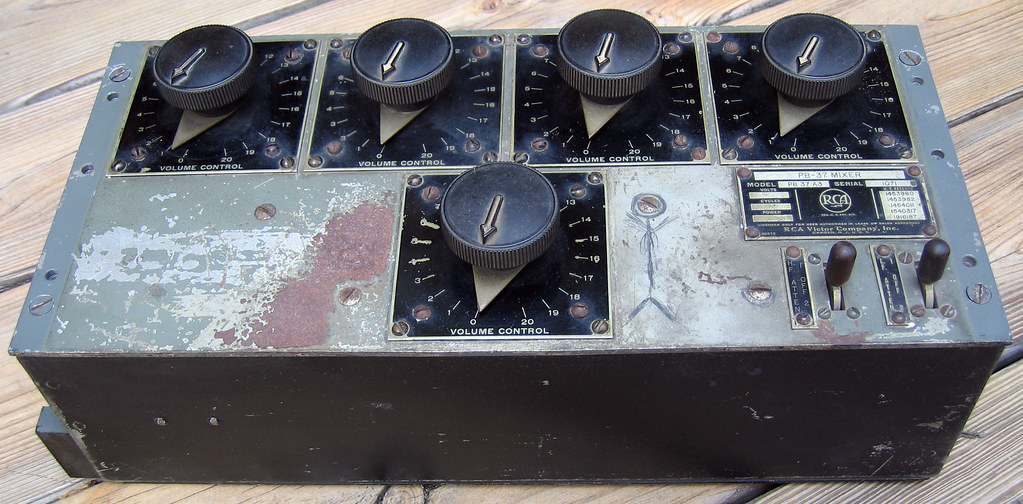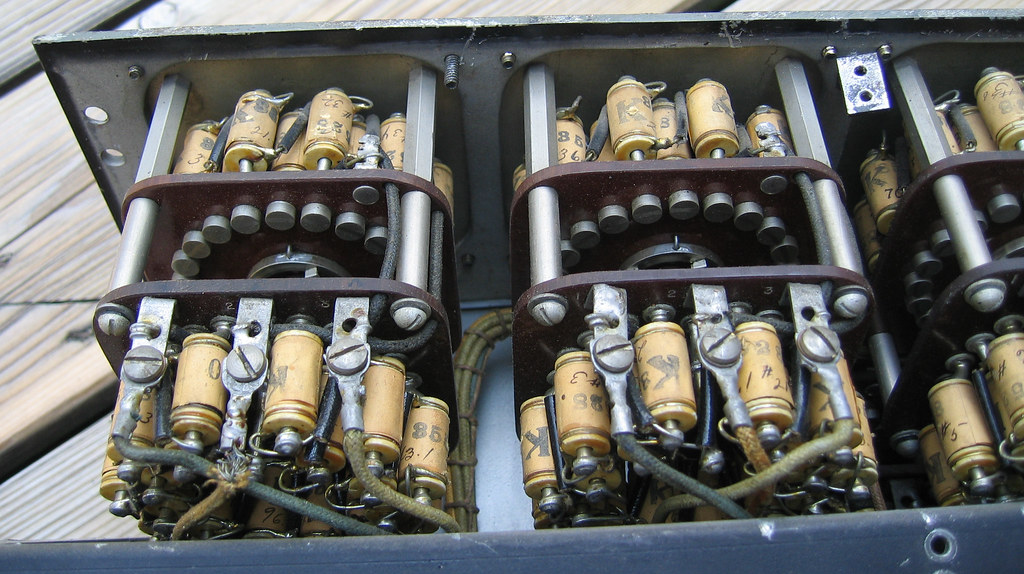1932ish RCA Victor four channel passive microphone mixer with low and high frequency attenuation circuits. I say 1932ish because 'Victor' was removed from all name plates on all the 1933 gear I've seen. And the 1930-31 equipment lines used slightly different knobs. Surprising how flat this thing is, given audio is passing through two pieces of early 1930's iron. This is equal/better response than you get out of a single Altec octal can or a Cinemag CMOQ-2S. This thing works perfectly. Roughly 200 ohm inputs and 500 ohm output. The PB model designation suggests it is part of the RCA Photophone equipment line, probably used for film work.
Response plots. These plots done with 200 ohm source and 560 ohm load, all attenuators set for minimum attenuation (pic shows max atten on all). Increasing attenuation has slight effect on extreme top end high frequency loss, but not significant with an input and the master set at 12 o'clock position. If you wind down three inputs to max attenuation, one at min, and master at min, you get roughly a 3 dB droop at 22 kHz.

Largest ladder attenuators I've ever seen; astonishingly overbuilt. These things are roughly twice as large as the average Daven type. RCA seems to have wound their own precision resistors too, as I've only seen these resistors in 1930's RCA gear. Appear to be dual bobbin winds; to minimize stray capacitance?

Response plots. These plots done with 200 ohm source and 560 ohm load, all attenuators set for minimum attenuation (pic shows max atten on all). Increasing attenuation has slight effect on extreme top end high frequency loss, but not significant with an input and the master set at 12 o'clock position. If you wind down three inputs to max attenuation, one at min, and master at min, you get roughly a 3 dB droop at 22 kHz.

Largest ladder attenuators I've ever seen; astonishingly overbuilt. These things are roughly twice as large as the average Daven type. RCA seems to have wound their own precision resistors too, as I've only seen these resistors in 1930's RCA gear. Appear to be dual bobbin winds; to minimize stray capacitance?



